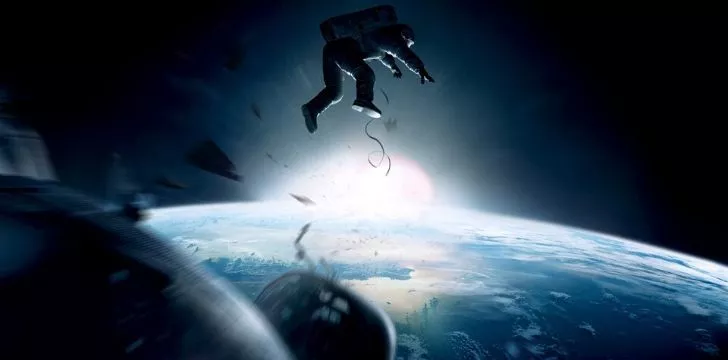In the world of Hollywood, it’s fair to say we see a lot of films about space that aren’t that realistic.
Explosions happening in space, spaceships battling like old wooden galleons, bombs dropping from spacecrafts through the gravity-void of space onto other spacecraft – we see a lot of Hollywood within sci-fi past and present.
However, there are quite a few films out there that strive for scientific accuracy over plot armor. Films that depict space in a way that matches our understanding of it.
Here are my top 5 realistic movies about space!
Apollo 13 (1995)
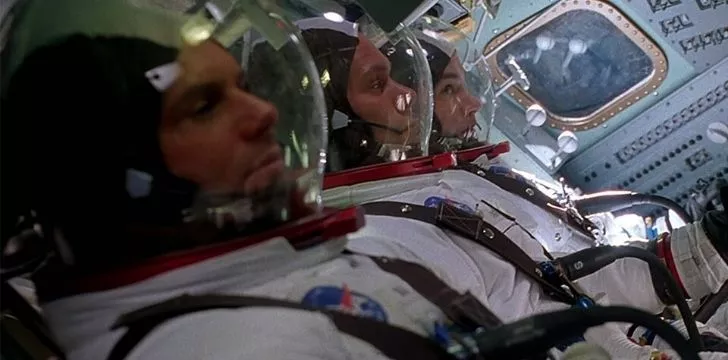
Apollo 13 is a docudrama film directed by Ron Howard that dramatizes the disastrous 1970 Apollo 13 lunar mission.
It stars Tom Hanks, Kevin Bacon and Bill Paxton as the astronauts en-route to the Moon for mankind’s third Moon landing mission when disaster strikes and the three spacemen have to embark on a perilous mission back to the Earth.
With an all-star cast, the film was a critical hit and ended up being nominated for 9 Oscars – winning one for Best Film Editing and Best Sound. Whilst being both a commercial and critical success, Apollo 13 also managed to portray the real-life events rather accurately.
Despite the fact there are a few inaccuracies giving way to artistic license throughout the film, such as the fact there was no argument between the astronauts Haise and Swigert (portrayed by Bill Paxton and Kevin Bacon, respectively), one of the film’s most iconic scenes uses almost verbatim dialogue taken from transcripts and recordings.
In the scene where the astronauts report to Ground Control they have a problem, the dialogue in this scene is almost word-for-word. The only thing that is slightly modified in this scene just so happens to be the film’s most iconic, stand-out moment.
In the film, when Tom Hanks says “Houston, we have a problem”, Swigert had actually said “Hey, we’ve got a problem here” whilst talking over Haise who had started off saying “Okay Houston”.
After this Ground Control had said “This is Houston, say again please” to which Jim Lovell had said “Houston we have a problem”.
Gravity (2013)
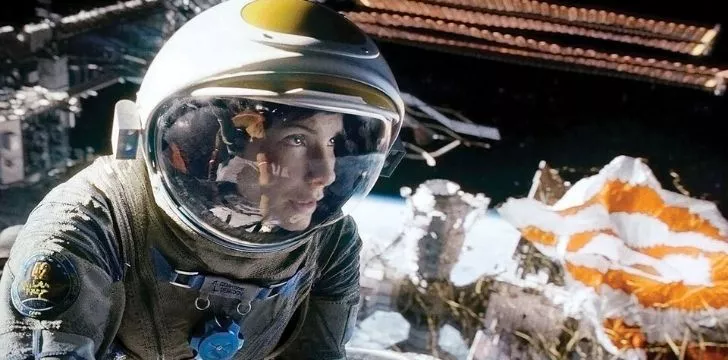
Gravity was a huge commercial success and managed to scoop up 7 Oscars as well as 6 BAFTAs.
The movie stars Sandra Bullock and George Clooney as two astronauts trying to make their way to safety after their space shuttle is destroyed.
Gravity’s Writer, Producer and Director, Alfonso Cuarón, stated that Gravity wasn’t supposed to be taken as a documentary and that sometimes the scientific accuracy of the plot has been tampered to give way to artistic license.
However, the film has been praised overall for its realism and the way it adheres to the overall physical principles of being in space.
One NASA astronaut, Michael J. Massimino, even noted how a special type of wirecutter used in the film is the same he used during one of his own spacewalks.
It also earned the highest of praise from astronaut Buzz Aldrin, who described the film’s visual effects of space as “remarkable” and that he “was so extravagantly impressed by the portrayal of the reality of zero gravity.”
Despite the fact that some scientific inaccuracies occurred throughout the film, the way in which Gravity captures the essence of being within space and a zero-gravity environment earned it the praise of scientists and former astronauts alike.
The Martian (2015)
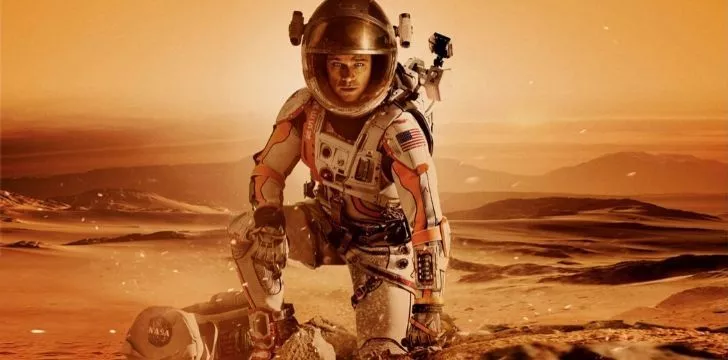
This 2015 sci-fi adaption of the book by the same name was directed by Ridley Scott and stars Matt Damon alongside an all-star cast as a lone astronaut besieged on the planet Mars, struggling to survive whilst waiting to be rescued.
Set in the year 2035, Damon’s character Mark Watney is struck by debris and assumed to be dead as his crew aborts their manned mission to Mars amidst a catastrophic sandstorm.
Waking up, Watney finds himself alone in a battle for survival on the planet’s harsh surface.
During his writing of the source-material novel, Andy Weir had strived to present his science as correctly as possible, and had used a lot of reader feedback with the scientific community to ensure the final product was as accurate as possible.
NASA’s Director of the Planetary Science Division at the NASA Science Mission Directorate worked as a technical adviser for the film adaption, and said that the film was “reasonably realistic” although there were elements that were unrealistic or slightly changed.
Some things that were slightly unrealistic were the ways in which the NASA buildings depicted in the film were more stylish than their real-life, functional counterparts – although in general much of the astronomical science was rather accurate.
The Martian does portray a strong level of realism when considering some of the main plot points – such as the way in which Watney is able to produce water is an accurate process that is currently being used by NASA as part of a planned Martian Rover mission.
One of the film’s most iconic scenes has Watney growing potatoes on Mars when his rations are running out. In this scene, he uses the poop of the astronauts as a fertilizer for the Martian soil.
This moment is both entertaining and accurate, with many NASA scientists believing that, despite the toxicity of Mars’s soil, it could be possible to grow plants in it.
Moon (2009)
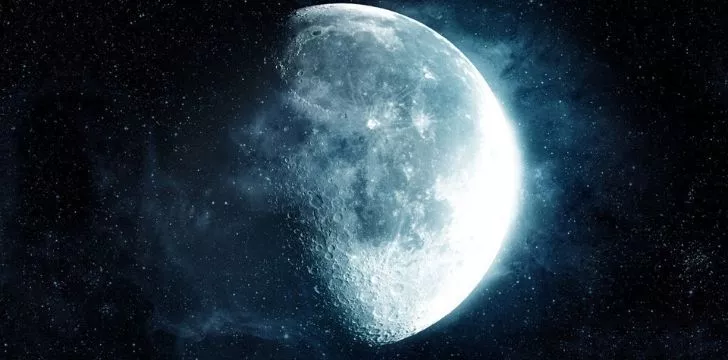
Moon is a bleakly beautiful piece of fiction that centers around Sam Bell, a man stationed alone on a lunar Helium-3 mine coming up to the end of his three-year working contract.
As the time ticks on, with only his robot friend GERTY for companionship, Sam starts to have a crisis of identity as he slowly realizes that he is, in fact, a clone and that he will never return home to see his family.
Despite not grossing too much ($10,000,000) it was modestly budgeted and made a decent profit, as well as receiving high critical acclaim – especially within the scientific community.
In 2013, a collective of 2,800 cognitive science researchers who were movie buffs analyzed over 10,000 different films.
Their aim was to find the top films for accurately depicting brain science, relevance to cognitive science and quality.
Moon ranked 5th on the list for Quality, 9th on the list for Accuracy and 3rd on the list for Relevance. The movie was also very well-received by NASA, who held a screening of film with Director Duncan Jones along with a Q&A afterwards.
In the film, Sam lives in a very sturdy, concrete-esque domed structure on the planet’s surface. This is something that could very possibly be buildable upon the Moon’s surface.
After the NASA screening, one of the specialists at the screening told Jones that she was working on a way to use lunar ace and the elements in lunar regolith (the loose rocks covering the Moon’s solid surface) to create concrete.
Concrete that could build a mining facility much like the one seen in Moon.
Another point of incredible, self-created accuracy that occurs in the film is the position of the mining facility. It is located on the Moon’s dark side, where there is less Helium-3, which raised some questions from NASA professionals during the Q&A after the film screening.
Jones stated he had chosen to put the base there because, theoretically, when harvesting Helium-3 from the Moon’s surface you are scooping up the first few inches of lunar regolith, cooking it to gas which is stored, and then kicking out the debris.
Due to the cooking process, there will be chemical changes, which may affect the Moon’s surface, and thus affect its reflectivity.
Jones stated to the NASA scientists that he didn’t believe it would be right to take on the risk to the environment from the potential altering of the Moon’s reflectivity.
In the fictional world he had created, Duncan Jones didn’t want to roll the dice on the environment.
His answers satisfied many of the questioning NASA scientists.
Interstellar (2014)
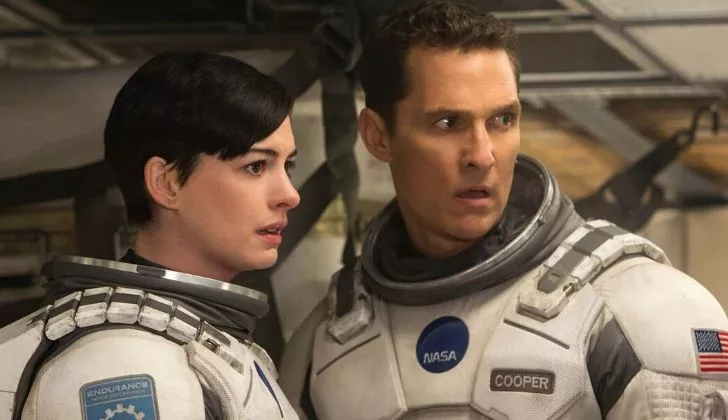
Interstellar was the tenth-highest grossing film of its year and a smash hit worldwide with both audiences and critics.
Written by both Jonathan and Christopher Nolan, and starring Matthew McConaughey, this film tells the story of a group of astronauts travelling through a wormhole near Saturn in search of a suitable new planet for humanity to colonize following an apocalyptic blight.
So for a sci-fi film about wormholes and black holes, how accurate is Interstellar? Well, the answer is simple: insanely accurate.
Throughout the film’s production, the level of detail that went into maintaining scientific accuracy was top tier.
During their writing of the script, the Nolan’s hired a theoretical physicist named Kip Thorne to act as the scientific consultant and executive producer for the film.
Thorne stated that he “worked on the equations that would enable tracing of light rays as they travelled through a wormhole or around a black hole” – so all of the science regarding black holes and wormholes within the film is based on Einstein’s general relativity equations.
Thorne also laid down two ground rules when writing the script: nothing would violate established physical laws, and all the wild speculations in the film would spring from science and not from the minds of screenwriters.
The film received quite a lot of high praise from the scientific community, with famous astrophysicist Neil deGrasse Tyson saying the science behind the film’s ending, where McConaughey’s character Cooper is able to interact with his past self, is all theoretically possible – saying how “we don’t really know what’s in a black hole, so take it and run with it.”
Another theoretical physicist, Michio Kaku said that Interstellar “could set the gold standard for science fiction movies for years to come”, whilst a former NASA software engineer said “Thorne’s and Nolan’s accounting of black holes and wormholes and the use of gravity is excellent.”
Another element of high accuracy within Interstellar is the way the black holes and wormholes are visually portrayed.
Thorne collaborated with a team of over 30 people at Double Negative VFX Studios, who were provided with pages and pages of deeply sourced theoretical equations on the movement of black holes.
These VFX engineers then wrote entirely new CGI rendering software based on these equations to create accurate visual simulations of the gravitational lensing caused by these phenomena.
Some of the individual frames featuring the black hole were so detailed they took up to 100 hours to render – totaling over 800 terabytes of data per frame!
The visual effects produced by this specialized software gave Thorne new insight into the gravitational lensing and accretion disks that surround black holes. This resulted in the publication of three new scientific papers.
The film’s rendered visuals were able to help advance science’s understanding of the phenomena surrounding black holes and wormholes.
How’s that for accuracy?!
So there you have it, my top 5 realistic movies about space! What did you think? Are there any which you think shouldn’t be on there? Or any you think should be on there that I didn’t include?
Let us know down in the comments and we’ll see you in the next article!
